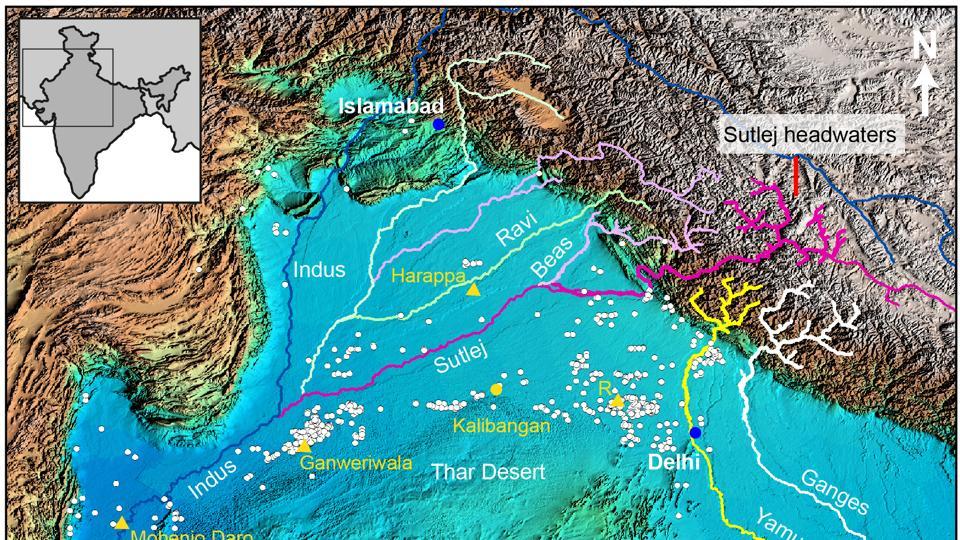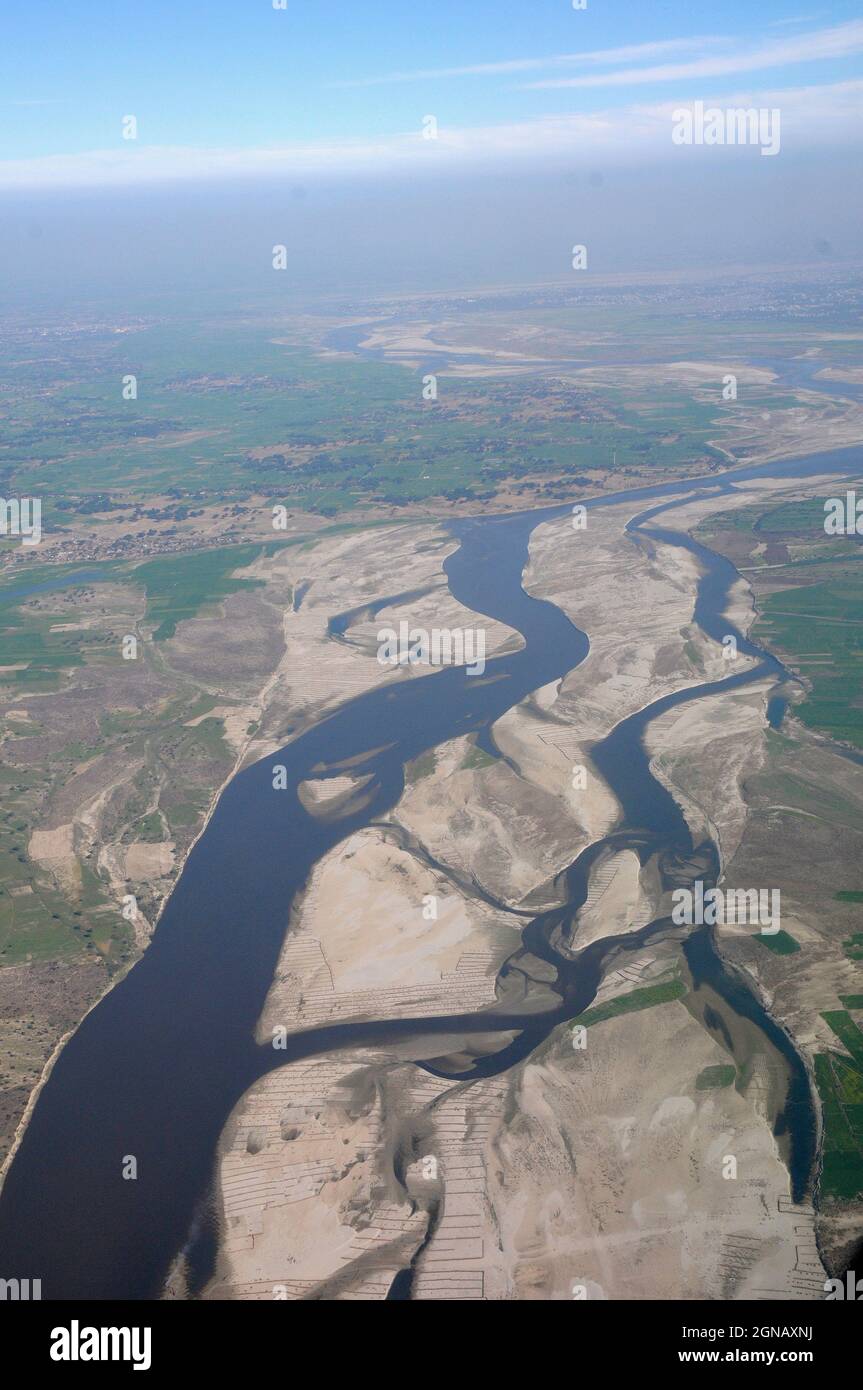
2) Ghagar-Hakra was a seasonal monsoon river and was not a major river like the Indus or Ganges etc. Since then, and even recently, many scientific studies have very clearly and credibly highlighted some major facts which indicate that 1) Ghagar-Hakra river never originated from high Himalayan mountains and it originated from Shivalik Hills, North of Delhi, contrary to the citations of Rig Veda which indicated that Saraswati originated from high mountains and was a very powerful river. When Mahabharata stated this unequivocally and as clearly as the daylight, that Saraswati did not die out at Vinasana as is believed by some scholars, and that it continued and followed an easterly course as compared to Ghagar-Hakra which followed a south westerly course, why is it that history is being re-written and incorrectly presented by some of the Indian scholars. Despite protestations by many Indian and other scholars, that without scientific evidence it can not be confirmed, an Indian university professor in the 1990s suggested that the Indus Valley Civilisation should be identified as either Saraswati Civilisation or Saraswati-Indus Civilisation. In the 1970s, when satellite imagery became available to us mortals, some Indians identified the old dried bed of Rivers Ghaggar-Hakra as the missing River Saraswati. Also due to the watershed which separates the two valleys, no river can cut across the watershed from one river valley to the other. Therefore, rivers which flow into Indus follow a south westerly direction and those flowing into Ganges flow into a south easterly direction.

It must also be understood that River Indus and River Ganges flow in river valleys and are clearly separates by a watershed which originates west of Delhi and follows a southerly direction down to the Arabia Sea. The Mahabharata's statement further confirms what has been stated in the Rig Veda that, Saraswati remains between Jamuna and Sutlej, however it does not flow southwards towards the Arabian Sea. The Forest of Naimisha is located in Uttar Pradesh, not far from Triveni Sangam where Ganga, Jamuna and Saraswati (in a subterranean mode) meet in a holy confluence at Allahabad, the place where Kumbh Mela is celebrated.

The most interesting and surprising aspect that has been highlighted in the Mahabharata itself and has not been much talked about (again very surprisingly) is the mention that Saraswati changes course eastwards towards the forest of Naimisha. From this point Baladeva, face turned east, visited hundreds and thousands of famous tirthas that occurred at every step along his journey along the banks of river Saraswati and reached the spot where Saraswati turns in an eastward direction towards the forest of Naimisha. He then proceeded to the Tirtha called Nagadhanwana (a Naga settlement a western extension of Nagas at Khandava a forest south of Indraprasta, capital of the kingdom of Pandavas, which is currently a Delhi suburb located to the west of Jamuna river) on the banks of Saraswati. Next he visited Sankha on the bank of same river and then on to Dwaita lake. Next he visited the pilgrimage site of Gargasrota on the bank of same river. The Mahabharata after narration of the Tirth at Vinasana, highlights that Lord Baladeva next visited Subhumika located on the bank of Saraswati where he came in contact with fair complexioned Apsaras (Divine Nymphs). Mahabharata qualifies this fact by further narrating that there were numerous other Trithas (pilgrimage sites) on the banks of Saraswati, ahead of Vinasana which were visited by mighty Lord Baladeva, elder brother of Lord Krishna. This and subsequent narration in Mahabharata clearly means that it were the Rishis who could not see the Saraswati at this place and that Saraswati was lost to them at Vinasana and not that the River had been completely lost, as it is famously accepted. The Mahabharata states that Saraswati became invisible at a place called Vinasana due to her contempt of Sudras and Abhiras and thus the Rishis lost her at this place. The Rig Veda indicates that Saraswati lie between Rivers Jamuna and Sutlej.

These are the two rivers which are not traceable. So, where are the two missing rivers? The other two rivers are believed to be the Saraswati and Drishdwati. However, the land of Punjab consist of five rivers as the name itself suggests.

By the time they had cut themselves aloof from their cognate and neighbouring people, especially the Persians, the Aryans had spread out to the farthest of the seven rivers, Sapta Sindhus." The Rig Veda also mentions Sapta Sindhu and it is famously believed to be the land of Punjab. According to Savarkar, "the history of the Aryan conquest began in the westernmost part of the Sapta Sindhu region when the foremost band of the intrepid Aryans made it their home and lighted the first sacrificial fire on the banks of the Sindhu.


 0 kommentar(er)
0 kommentar(er)
